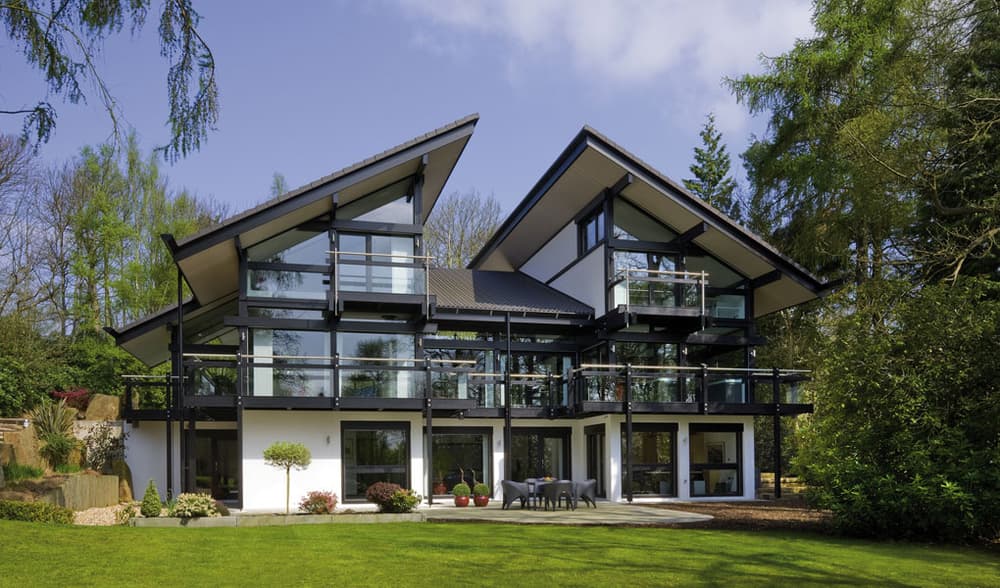
Cool Roof Architecture Solutions: A Guide to Sustainable Building Design
In the quest for eco-friendly and energy-efficient buildings, cool roof architecture solutions have emerged as a vital component. These solutions not only reduce the energy consumption of a building but also contribute to the mitigation of urban heat islands. In this article, we will explore the various aspects of cool roof architecture and how it can be integrated into modern building designs.

The Importance of Cool Roofs
Cool roofs are designed to reflect more sunlight and absorb less heat than standard roofs. This feature is crucial in reducing the cooling energy needs of a building, especially in hot climates. By decreasing the heat absorbed, cool roofs can help in lowering indoor temperatures, thereby reducing the reliance on air conditioning systems.
How Cool Roofs Work
The performance of a cool roof is determined by two properties: solar reflectance and thermal emittance. Solar reflectance is the ability of a roof to reflect sunlight, while thermal emittance is its ability to release absorbed heat. Together, these properties help in minimizing the heat load on a building.
Materials Used in Cool Roofs
Various materials can be used to construct cool roofs. These include reflective coatings, membranes, tiles, and shingles. The choice of material depends on factors such as the building’s structure, climate, and aesthetic preferences.
Reflective Coatings
Reflective coatings are applied to existing roofs to enhance their reflectivity. These coatings are available in a range of colors and can significantly improve the energy efficiency of a building.
Membranes
Membrane roofs are made from materials like PVC or TPO and are known for their high reflectivity and durability. These roofs are ideal for commercial buildings and flat roofs.
Benefits of Cool Roofs
Implementing cool roof architecture solutions offers numerous benefits. These include reduced energy bills, improved indoor comfort, and extended roof lifespan. Additionally, cool roofs contribute to the reduction of urban heat islands, making cities more livable.
Environmental Impact
By reflecting sunlight, cool roofs help in reducing the overall temperature of urban areas. This reduction in temperature can lead to decreased smog formation and improved air quality.
Cost Savings
While the initial cost of installing a cool roof may be higher, the long-term savings in energy bills can offset this expense. Cool roofs can also extend the lifespan of roofing materials, reducing maintenance and replacement costs.
Implementing Cool Roof Solutions
For homeowners and builders interested in cool roof architecture solutions, several factors need to be considered. These include the building’s location, existing roof structure, and budget. Consulting with a professional can help in selecting the most suitable cool roof solution.
DIY Cool Roof Installation
For those with a DIY spirit, installing reflective coatings is a feasible option. However, it’s essential to follow manufacturer guidelines to ensure proper application and performance.
Professional Installation
For larger projects or complex roof structures, hiring a professional is recommended. A qualified contractor can ensure that the cool roof is installed correctly and meets all necessary standards.
Related Concepts in Sustainable Architecture
Cool roofs are just one aspect of sustainable building design. Other concepts such as natural ventilation and building orientation also play a crucial role in enhancing energy efficiency and comfort.
Natural Ventilation
Incorporating natural ventilation in building design can significantly reduce the need for mechanical cooling systems. This approach utilizes the natural movement of air to cool and ventilate spaces.
Building Orientation
The orientation of a building can impact its exposure to sunlight and prevailing winds. By optimizing building orientation, energy consumption can be reduced, and indoor comfort can be enhanced.
Challenges and Solutions
While cool roof architecture solutions offer numerous benefits, they also present certain challenges. These include the initial cost and the need for specialized materials and labor. However, these challenges can be addressed through careful planning and design.
Overcoming Cost Barriers
To overcome cost barriers, homeowners can explore financing options or government incentives that support the installation of cool roofs. Additionally, the long-term savings in energy bills can justify the initial investment.
Material Availability
In some regions, the availability of suitable materials for cool roofs can be a challenge. Building professionals can work with suppliers to source appropriate materials or consider alternative solutions.
Conclusion
Incorporating cool roof architecture solutions into building design is a step towards creating more sustainable and energy-efficient spaces. By reducing energy consumption and mitigating urban heat, cool roofs contribute to a healthier environment and enhanced quality of life.

FAQs on Cool Roof Architecture
What is the primary benefit of cool roofs?
The primary benefit of cool roofs is their ability to reduce energy consumption by reflecting sunlight and absorbing less heat.
Are cool roofs suitable for all climates?
While cool roofs are most beneficial in hot climates, they can also offer advantages in cooler regions by reducing the need for heating and cooling.
How can I determine if a cool roof is right for my home?
Consulting with a building professional can help assess your home’s specific needs and determine if a cool roof is a suitable solution.
This article contains affiliate links. We may earn a commission at no extra cost to you.